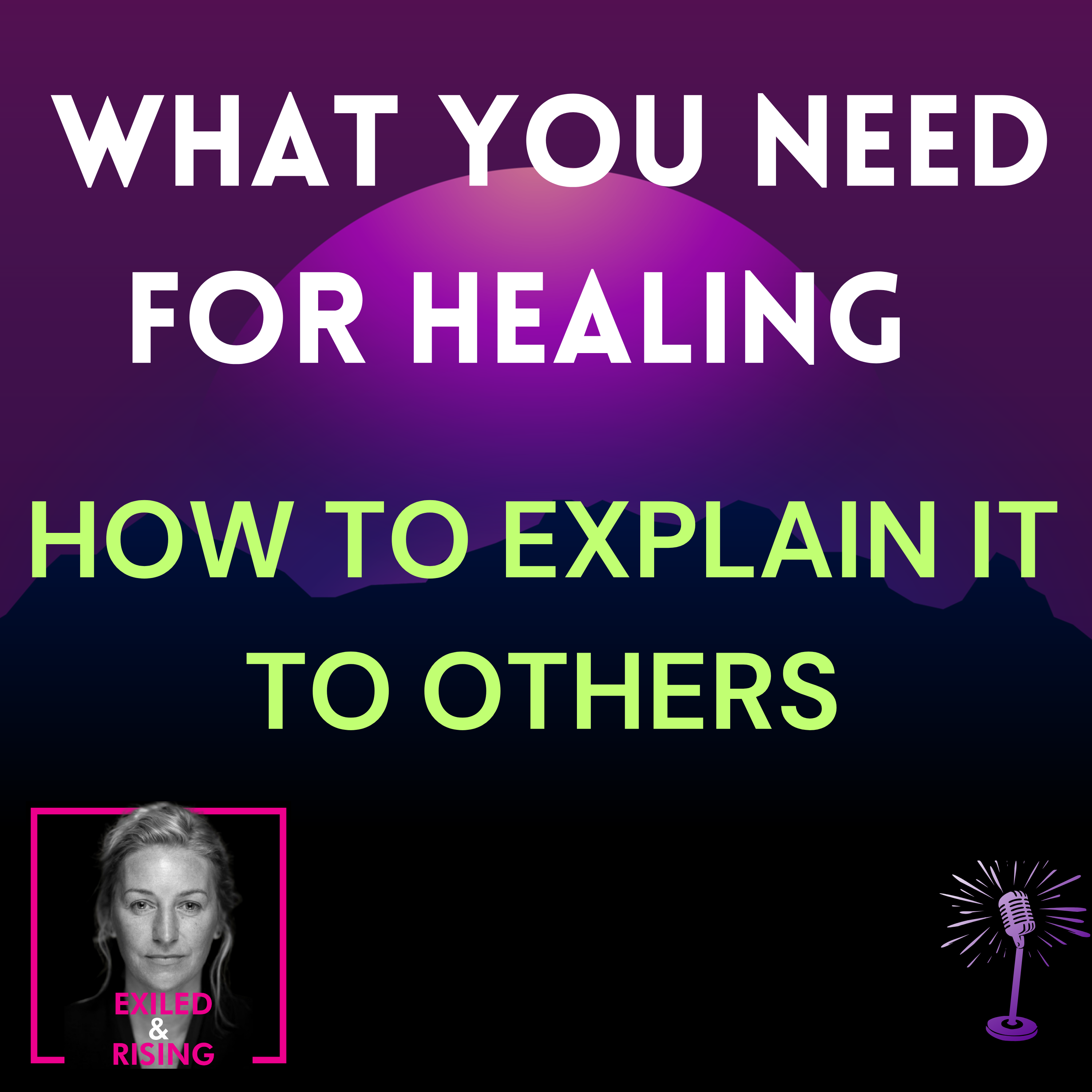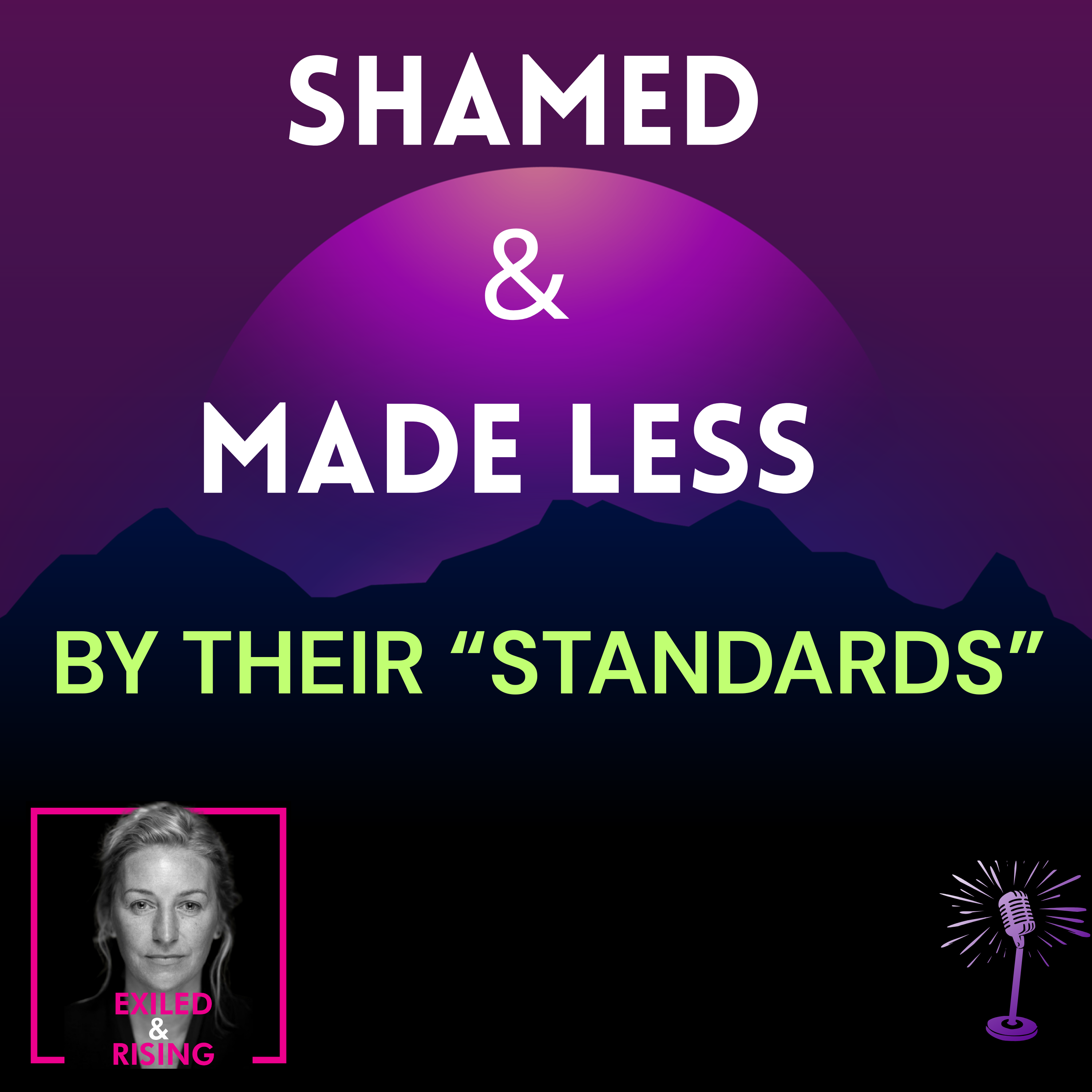Show Notes
Ana’s new Exiled & Rising episode — one of her most intimate and practical teachings on relational healing.
Ana teaches that true healing begins when others stop denying your reality and simply stay — seeing, listening, and acknowledging without defense or blame.
Core Teaching
-
Healing requires acknowledgment, not fixing.
Ana distills trauma-informed relational wisdom into one simple truth: healing happens when someone sees, hears, and acknowledges your pain without judgment, denial, or defense. -
The antidote to denial is witnessing.
Trauma isolates. Its wound is not only what happened, but that no one witnessed or believed it. The act of being seen — truly seen — restores relational safety and begins regulation. -
Language as reclamation.
By providing listeners with specific words to share — “Don’t judge me. Don’t defend yourself. See me.” — Ana gives trauma survivors a script for self-advocacy. It’s not therapy jargon; it’s everyday language that builds boundaries and connection at once.
Somatic and Relational Lens
-
Healing through co-regulation.
The piece emphasizes that trauma cannot be healed in isolation. Healing requires relational attunement — someone whose nervous system stays calm and present as yours expresses pain. -
Gaze as safety cue.
“Look at my eyes. See me when I share my experience.” Eye contact here is not performative; it’s a neurobiological bridge that signals safety to the vagus nerve and supports emotional regulation. -
Boundaries through language.
Each line — “Don’t blame me. Don’t defend yourself. Don’t leave.” — reestablishes the ruptured boundaries that trauma once erased. These are phrases that protect the speaker’s truth while keeping connection possible. -
Validation as repair.
The healing moment comes when someone can say, “I see you. I believe this happened to you.” That acknowledgment begins to repair what trauma destroyed — trust in the self and in others.
Psychological and Cultural Layers
-
Countering the “minimizing” culture.
“Don’t use humor to minimize it” critiques how many families and workplaces handle pain — with jokes, redirection, or avoidance. Ana reframes this as an act of denial that perpetuates harm. -
Rejecting self-blame.
Both sides of the relational exchange are asked to drop blame: “Don’t blame me. Don’t blame yourself.” This removes the moral transaction from the exchange and replaces it with empathy. -
Healing through mutual presence.
The structure of Ana’s teaching — “Don’t… Don’t… See me…” — moves from defense (what not to do) to connection (what to do). It’s a rhythm that mirrors a therapy session: regulating boundaries first, then opening to intimacy.
Somatic Significance
-
Safety through voice and rhythm.
The steady repetition is itself a regulation tool. Each instruction is short, predictable, and calm — an auditory anchor for the nervous system. -
Owning embodied truth.
“This is my story, my pain, my hurt.” Naming the experience in the body’s own words (“my hurt”) integrates cognition and sensation — a somatic statement of ownership.
What Ana is Teaching
-
Healing happens in relationship, not in isolation.
We need to be witnessed, not analyzed or corrected. -
Acknowledgment heals more than advice.
Validation creates safety; problem-solving often reactivates shame. -
You have the right to define your reality.
The trauma wound is invalidation; the repair is being believed. -
Language is a nervous system tool.
Saying these words aloud — calmly, clearly, repetitively — regulates both the speaker and the listener. -
Boundaries are acts of care.
“Don’t judge me. Don’t leave.” These phrases are not demands but invitations to presence within safety.
Therapeutic Application
-
For survivors: Use Ana’s words as a personal script. Write them, speak them, record them — especially before difficult conversations.
-
For partners/friends: Practice active witnessing — eye contact, silence, acknowledgment. Avoid humor, advice, or self-defense.
-
For therapists: Introduce these statements in session to teach clients how to ask for attuned witnessing in their relationships.
Stylistic Craft
-
Minimalist power.
Ana’s use of short imperatives — “Don’t judge me. Don’t defend yourself.” — makes the teaching feel like a mantra. The rhythm calms the nervous system even as it delivers emotional truth. -
Voice of authority and intimacy.
She speaks both as therapist and survivor — bridging professional insight with personal resonance. -
Ending cadence.
“Much care, much care” — her signature sign-off — grounds the listener back into warmth and safety, closing the loop of co-regulation.
Ana teaches that true healing begins when others stop denying your reality and simply stay — seeing, listening, and acknowledging without defense or blame.
Buy Book: The Trauma We Don't Talk About https://amzn.to/41SjKKL
Want to go deeper? Enroll in Ana’s somatic programs for PTSD and trauma recovery
https://exiledandrising.mykajabi.com/
Please donate and support podcast continuation
https://donate.stripe.com/3cI9AS5Xfb9W6O832VfEk00
About Ana Mael:
Ana Mael is a genocide survivor, somatic therapist, and author of The Trauma We Don’t Talk About.
She is the founder of the Somatic Trauma Recovery Center and has dedicated her career to helping survivors reclaim their identity, dignity, and self-trust. With decades of lived experience, Ana offers a unique, unapologetic approach to healing that combines trauma justice, somatic therapy, and spiritual integrity. She advocates for vulnerability, accountability, and collective healing to dismantle the systems that perpetuate oppression and harm.
Chapters
- (00:00:00) - What Do I Need For Healing?



